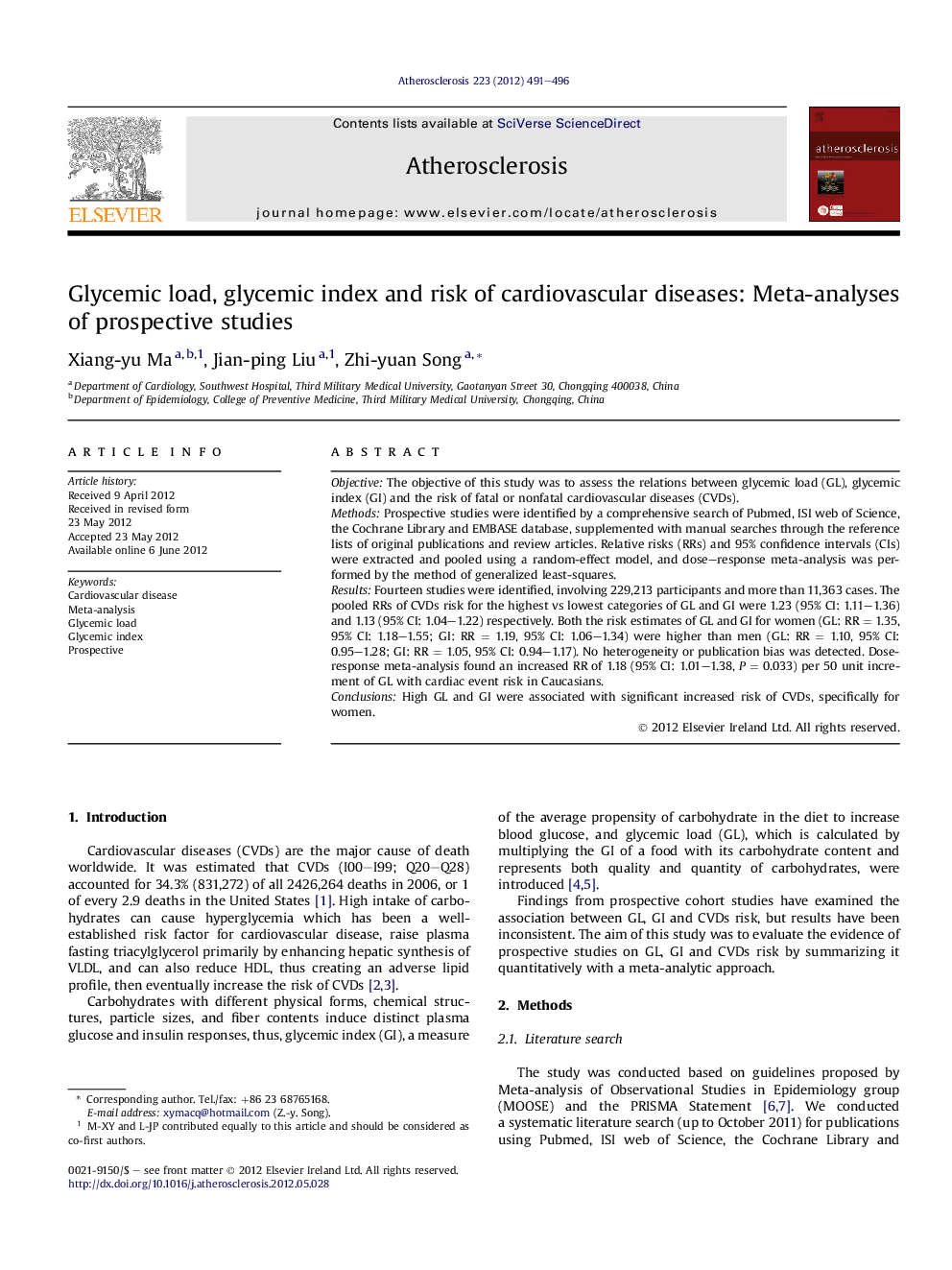| Article ID | Journal | Published Year | Pages | File Type |
|---|---|---|---|---|
| 5948601 | Atherosclerosis | 2012 | 6 Pages |
ObjectiveThe objective of this study was to assess the relations between glycemic load (GL), glycemic index (GI) and the risk of fatal or nonfatal cardiovascular diseases (CVDs).MethodsProspective studies were identified by a comprehensive search of Pubmed, ISI web of Science, the Cochrane Library and EMBASE database, supplemented with manual searches through the reference lists of original publications and review articles. Relative risks (RRs) and 95% confidence intervals (CIs) were extracted and pooled using a random-effect model, and dose-response meta-analysis was performed by the method of generalized least-squares.ResultsFourteen studies were identified, involving 229,213 participants and more than 11,363 cases. The pooled RRs of CVDs risk for the highest vs lowest categories of GL and GI were 1.23 (95% CI: 1.11-1.36) and 1.13 (95% CI: 1.04-1.22) respectively. Both the risk estimates of GL and GI for women (GL: RRÂ =Â 1.35, 95% CI: 1.18-1.55; GI: RRÂ =Â 1.19, 95% CI: 1.06-1.34) were higher than men (GL: RRÂ =Â 1.10, 95% CI: 0.95-1.28; GI: RRÂ =Â 1.05, 95% CI: 0.94-1.17). No heterogeneity or publication bias was detected. Dose-response meta-analysis found an increased RR of 1.18 (95% CI: 1.01-1.38, PÂ =Â 0.033) per 50 unit increment of GL with cardiac event risk in Caucasians.ConclusionsHigh GL and GI were associated with significant increased risk of CVDs, specifically for women.
⺠A comprehensive literature retrieval. ⺠Prospective design of the studies. ⺠High GL and GI were associated with significant increased risk of CVDs, specifically for women. ⺠Significant dose-response for the association of GL with CVDs. ⺠No heterogeneity or publication biases were detected.
